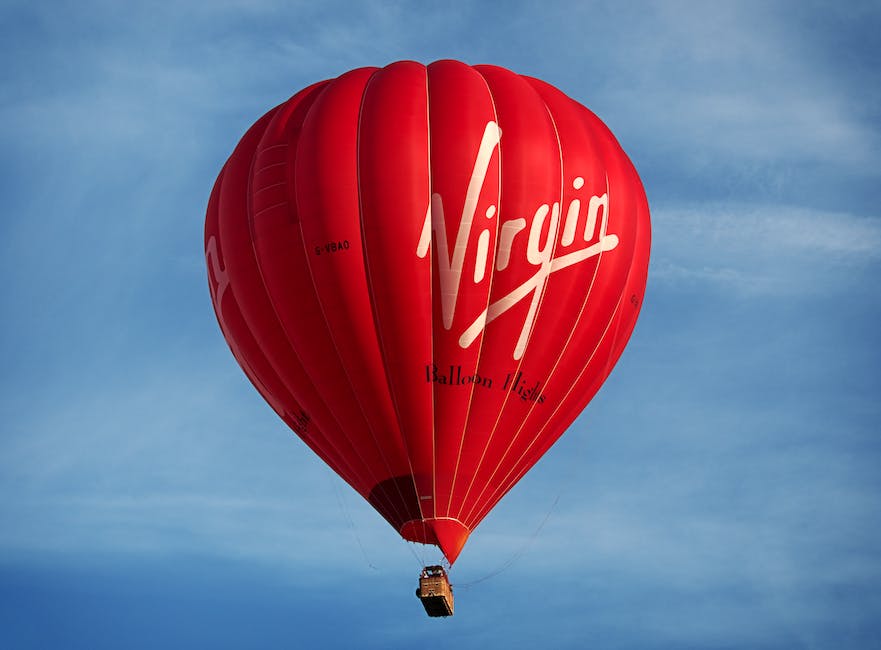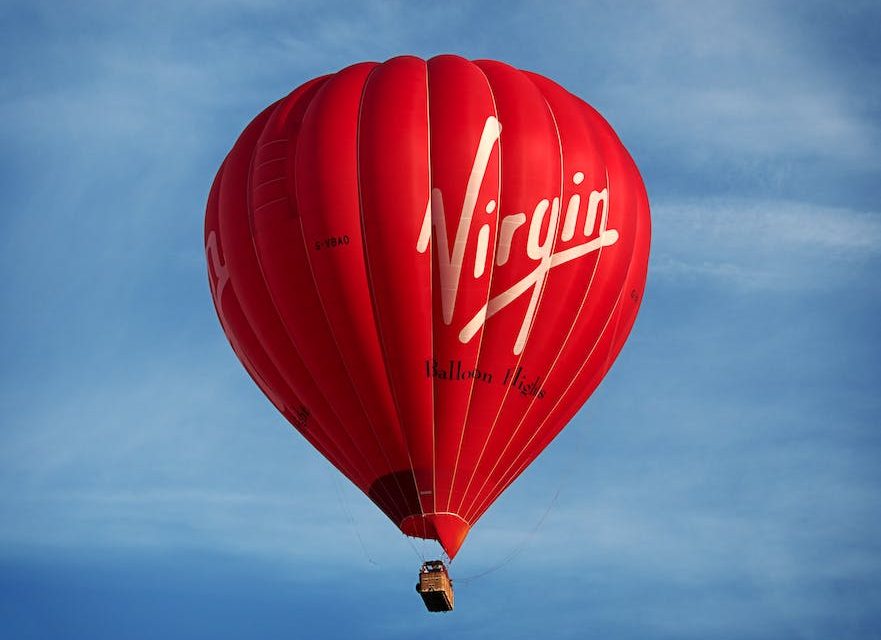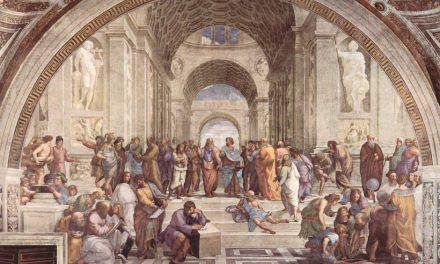Table of Contents
Charting New Frontiers: Richard Branson’s Virgin Galactic Adventure – Defying Gravity, Inspiring Possibilities.
Introduction
Charting New Frontiers: Richard Branson’s Virgin Galactic Adventure is a captivating exploration of Richard Branson’s ambitious venture into the realm of commercial space travel. This book delves into the visionary entrepreneur’s journey in establishing Virgin Galactic, a company aimed at making space tourism a reality for the general public. From the early days of conceptualization to the groundbreaking achievements and setbacks along the way, this book offers a comprehensive account of Branson’s relentless pursuit of pushing the boundaries of human exploration. With a blend of inspiring anecdotes, behind-the-scenes insights, and expert analysis, Charting New Frontiers provides a fascinating glimpse into the future of space travel and the indomitable spirit of one of the world’s most iconic business magnates.
The History and Vision of Virgin Galactic

Richard Branson, the renowned entrepreneur and founder of the Virgin Group, has always been known for his bold and audacious ventures. From music to airlines, Branson has consistently pushed the boundaries of what is possible. One of his most ambitious projects to date is Virgin Galactic, a company that aims to make space travel accessible to the general public.
The history of Virgin Galactic dates back to 2004 when Branson announced his intention to create the world’s first commercial spaceline. Inspired by the X Prize Foundation’s $10 million prize for the first privately funded human spaceflight, Branson saw an opportunity to revolutionize the space industry. He assembled a team of experts and engineers, and Virgin Galactic was born.
The vision behind Virgin Galactic is to make space travel a reality for ordinary people. Branson believes that space should not be limited to astronauts and scientists but should be accessible to anyone with a sense of adventure. With this vision in mind, Virgin Galactic set out to develop a spacecraft that could carry passengers to the edge of space and back.
The centerpiece of Virgin Galactic’s fleet is the SpaceShipTwo, a state-of-the-art spacecraft designed to carry six passengers and two pilots. Unlike traditional rockets, the SpaceShipTwo is launched from a carrier aircraft called WhiteKnightTwo. This unique launch system allows for a smoother and more comfortable ride for the passengers.
To ensure the safety of its passengers, Virgin Galactic has implemented rigorous testing and training programs. Potential astronauts undergo extensive medical examinations and training sessions to prepare them for the physical and mental challenges of space travel. The company also works closely with regulatory authorities to meet the highest safety standards.
In addition to its commitment to safety, Virgin Galactic is also dedicated to minimizing its environmental impact. The company has made significant investments in research and development to develop greener and more sustainable technologies. This includes the use of hybrid rocket motors and the exploration of alternative fuels.
The journey to space with Virgin Galactic begins at Spaceport America, the world’s first purpose-built commercial spaceport. Located in New Mexico, Spaceport America serves as the launch site for Virgin Galactic’s spaceflights. The facility features state-of-the-art infrastructure and amenities, including a mission control center and astronaut training facilities.
Since its inception, Virgin Galactic has faced numerous challenges and setbacks. In 2014, tragedy struck when the first SpaceShipTwo prototype, VSS Enterprise, crashed during a test flight, resulting in the death of one pilot. The incident was a devastating blow to the company, but Branson remained determined to press on.
Despite the setbacks, Virgin Galactic has made significant progress in recent years. In 2018, the company successfully completed its first manned spaceflight, with Branson himself among the passengers. This milestone marked a major step forward in the company’s quest to make space travel a reality for everyone.
Looking ahead, Virgin Galactic has ambitious plans for the future. The company aims to expand its fleet of spacecraft and increase the frequency of its spaceflights. It also plans to offer a range of space experiences, including orbital flights and scientific research missions.
In conclusion, Virgin Galactic is a testament to Richard Branson’s vision and determination. Through his audacious venture, Branson aims to chart new frontiers and make space travel accessible to all. With its state-of-the-art spacecraft and commitment to safety and sustainability, Virgin Galactic is poised to revolutionize the space industry and inspire a new generation of space explorers.
Richard Branson’s Role in the Space Tourism Industry
Richard Branson, the renowned entrepreneur and founder of the Virgin Group, has long been associated with pushing boundaries and exploring new frontiers. His latest venture, Virgin Galactic, is no exception. Branson’s role in the space tourism industry has been instrumental in shaping the future of space travel and opening up opportunities for ordinary people to experience the wonders of space.
Branson’s interest in space travel dates back to his childhood. As a young boy, he dreamt of becoming an astronaut and exploring the vastness of the universe. While he may not have achieved his childhood dream of going to space himself, Branson has made it his mission to make space accessible to everyone.
In 2004, Branson founded Virgin Galactic with the goal of offering commercial space travel to the public. The company’s flagship vehicle, SpaceShipTwo, is designed to carry six passengers and two pilots to the edge of space. Branson’s vision is to create a new era of space tourism, where anyone with the means can experience the thrill of weightlessness and see the Earth from a whole new perspective.
Branson’s role in the space tourism industry goes beyond just founding Virgin Galactic. He has been actively involved in every aspect of the company’s development, from the design of the spacecraft to the training of the pilots and crew. His hands-on approach and attention to detail have been crucial in ensuring the safety and success of Virgin Galactic’s missions.
One of the key challenges Branson faced in launching Virgin Galactic was the development of a safe and reliable spacecraft. Space travel is inherently risky, and Branson was determined to create a vehicle that would prioritize passenger safety above all else. To achieve this, he assembled a team of top engineers and scientists who worked tirelessly to design and build a spacecraft that met the highest safety standards.
Branson’s commitment to safety was put to the test in 2014 when a tragic accident occurred during a test flight of SpaceShipTwo. The incident resulted in the loss of one pilot’s life and serious injuries to another. Despite this setback, Branson remained resolute in his mission to make space travel safe and accessible. He vowed to learn from the accident and make the necessary improvements to ensure the safety of future flights.
Since the accident, Branson and his team have made significant advancements in the development of SpaceShipTwo. The spacecraft has undergone rigorous testing and has successfully completed several manned flights to the edge of space. Branson himself has even taken part in some of these test flights, demonstrating his unwavering commitment to the project.
Branson’s role in the space tourism industry extends beyond just Virgin Galactic. He has also been a vocal advocate for the commercialization of space travel and has actively supported other companies in their efforts to enter the market. His belief in the potential of space tourism to revolutionize the way we travel and explore the universe has inspired countless others to pursue their own space-related ventures.
In conclusion, Richard Branson’s role in the space tourism industry cannot be overstated. His vision, determination, and commitment to safety have been instrumental in shaping the future of space travel. Through Virgin Galactic, Branson has made it possible for ordinary people to fulfill their childhood dreams of going to space. As the space tourism industry continues to evolve, Branson’s influence will undoubtedly continue to be felt, charting new frontiers and inspiring future generations to reach for the stars.
The Technological Innovations of Virgin Galactic
Virgin Galactic, the brainchild of British entrepreneur Richard Branson, has been making waves in the aerospace industry with its ambitious goal of making space tourism a reality. While the concept of space tourism may seem like something out of a science fiction novel, Virgin Galactic has been steadily working towards turning this dream into a reality through its technological innovations.
One of the key technological innovations of Virgin Galactic is its spacecraft, the VSS Unity. This spacecraft, designed to carry six passengers and two pilots, is a marvel of engineering. It is powered by a hybrid rocket motor, which combines the benefits of both solid and liquid rocket fuels. This innovative design allows for greater flexibility and safety, as the spacecraft can be shut down and restarted in flight if necessary. Additionally, the VSS Unity is equipped with a unique feathering system, which allows it to re-enter the Earth’s atmosphere in a controlled manner, reducing the stress on the vehicle and its occupants.
Another technological innovation of Virgin Galactic is its launch system. Unlike traditional rockets that are launched vertically from the ground, Virgin Galactic’s spacecraft is launched from a carrier aircraft called WhiteKnightTwo. This launch system, known as air launch to orbit, offers several advantages over traditional ground-based launches. It allows for greater flexibility in terms of launch locations, as the carrier aircraft can take off from any suitable runway. It also reduces the amount of fuel needed for launch, as the carrier aircraft provides the initial boost before the spacecraft’s rocket motor ignites.
In addition to its spacecraft and launch system, Virgin Galactic has also developed innovative technologies to enhance the overall space tourism experience. One such technology is the Spaceship Cabin, which has been designed with the comfort and safety of passengers in mind. The cabin features large windows, allowing passengers to enjoy breathtaking views of Earth and space. It is also equipped with reclining seats and an advanced ventilation system to ensure a comfortable journey.
Furthermore, Virgin Galactic has developed a unique training program for its future astronauts. The program, known as Astronaut Readiness Program, prepares individuals for the physical and mental challenges of space travel. Participants undergo rigorous training, including centrifuge simulations to experience the forces of acceleration and weightlessness, as well as parabolic flights to simulate the feeling of zero gravity. This comprehensive training program ensures that passengers are well-prepared for their journey into space.
The technological innovations of Virgin Galactic have not only pushed the boundaries of space travel but have also paved the way for future advancements in the aerospace industry. By developing a reusable spacecraft and a flexible launch system, Virgin Galactic has made space tourism more accessible and sustainable. Moreover, the company’s focus on passenger comfort and safety has set a new standard for the industry.
In conclusion, Virgin Galactic’s technological innovations have revolutionized the concept of space tourism. Through its spacecraft, launch system, cabin design, and training program, the company has made significant strides towards making space travel a reality for the general public. Richard Branson’s vision of charting new frontiers in space exploration is becoming a reality, thanks to the groundbreaking technologies developed by Virgin Galactic. As the company continues to push the boundaries of what is possible, the future of space tourism looks brighter than ever.
The Future of Space Travel: Implications and Possibilities
The future of space travel holds immense possibilities and implications for humanity. As technology continues to advance at an unprecedented rate, the dream of exploring the vast expanse of the universe is becoming a reality. One individual who has been at the forefront of this endeavor is Richard Branson, the founder of Virgin Galactic. Branson’s vision of commercial space travel has captured the imagination of people around the world, and his company is charting new frontiers in the industry.
Virgin Galactic aims to make space travel accessible to the general public, offering a unique and awe-inspiring experience. The company’s flagship vehicle, SpaceShipTwo, is designed to carry six passengers and two pilots to the edge of space. This innovative spacecraft utilizes a hybrid rocket motor and a unique re-entry system, allowing for a safe and comfortable journey. With its sleek design and cutting-edge technology, SpaceShipTwo represents a significant leap forward in the field of space travel.
The implications of Virgin Galactic’s endeavors are far-reaching. The ability to travel to space opens up a whole new realm of possibilities for scientific research and exploration. Astronomers and scientists will have the opportunity to conduct experiments and observations in a zero-gravity environment, providing valuable insights into the mysteries of the universe. Additionally, the commercialization of space travel has the potential to create a new industry, generating jobs and economic growth.
Furthermore, the impact of Virgin Galactic’s achievements extends beyond the realm of science and economics. The experience of space travel has the power to inspire and transform individuals. The sight of Earth from space has been described as a life-changing experience, fostering a sense of awe and appreciation for our planet. By offering this experience to a wider audience, Virgin Galactic is not only pushing the boundaries of technology but also fostering a deeper connection to our planet and the universe.
However, the future of space travel is not without its challenges. Safety is a paramount concern, and Virgin Galactic has taken extensive measures to ensure the well-being of its passengers. Rigorous testing and training programs are in place to prepare individuals for the unique conditions of space travel. Additionally, the company is continuously refining its technology and procedures to enhance safety and reliability.
Another challenge is the environmental impact of space travel. Rockets emit large amounts of greenhouse gases, contributing to climate change. As the demand for space travel increases, it is crucial to develop sustainable and eco-friendly alternatives. Virgin Galactic is actively exploring the use of biofuels and other environmentally friendly technologies to minimize its carbon footprint.
In conclusion, Richard Branson’s Virgin Galactic is charting new frontiers in the future of space travel. The company’s vision of making space accessible to the general public has the potential to revolutionize the industry. The implications of this endeavor are vast, from scientific research and economic growth to personal transformation and a deeper connection to our planet. However, challenges such as safety and environmental impact must be addressed to ensure the long-term sustainability of space travel. With its commitment to innovation and sustainability, Virgin Galactic is paving the way for a future where space travel is not just a dream but a reality for all.
Q&A
1. What is “Charting New Frontiers: Richard Branson’s Virgin Galactic Adventure”?
“Charting New Frontiers: Richard Branson’s Virgin Galactic Adventure” is a documentary that follows Richard Branson’s journey with Virgin Galactic, his space tourism company.
2. Who is Richard Branson?
Richard Branson is a British entrepreneur and the founder of the Virgin Group, which includes various businesses such as Virgin Atlantic Airways and Virgin Records.
3. What is Virgin Galactic?
Virgin Galactic is a space tourism company founded by Richard Branson. It aims to offer suborbital spaceflights to tourists, allowing them to experience weightlessness and see Earth from space.
4. What is the purpose of the documentary?
The purpose of the documentary “Charting New Frontiers: Richard Branson’s Virgin Galactic Adventure” is to provide an inside look into Richard Branson’s journey with Virgin Galactic and the development of commercial space travel.
Conclusion
In conclusion, Richard Branson’s Virgin Galactic Adventure, known as Charting New Frontiers, represents a significant milestone in the commercial space industry. Branson’s vision and determination have propelled Virgin Galactic to become a leading company in the race for space tourism. The successful launch and subsequent flights of SpaceShipTwo have demonstrated the potential for commercial space travel and opened up new possibilities for exploration beyond Earth’s atmosphere. Branson’s commitment to making space accessible to the public has inspired a new generation of space enthusiasts and has paved the way for future advancements in the industry. Overall, Charting New Frontiers marks a significant achievement in the pursuit of space tourism and exploration.





